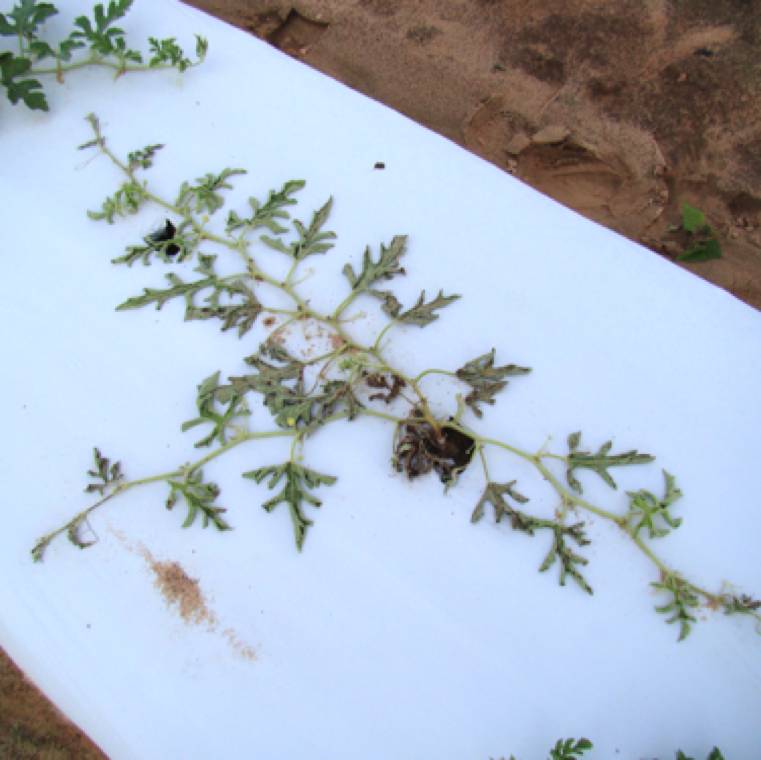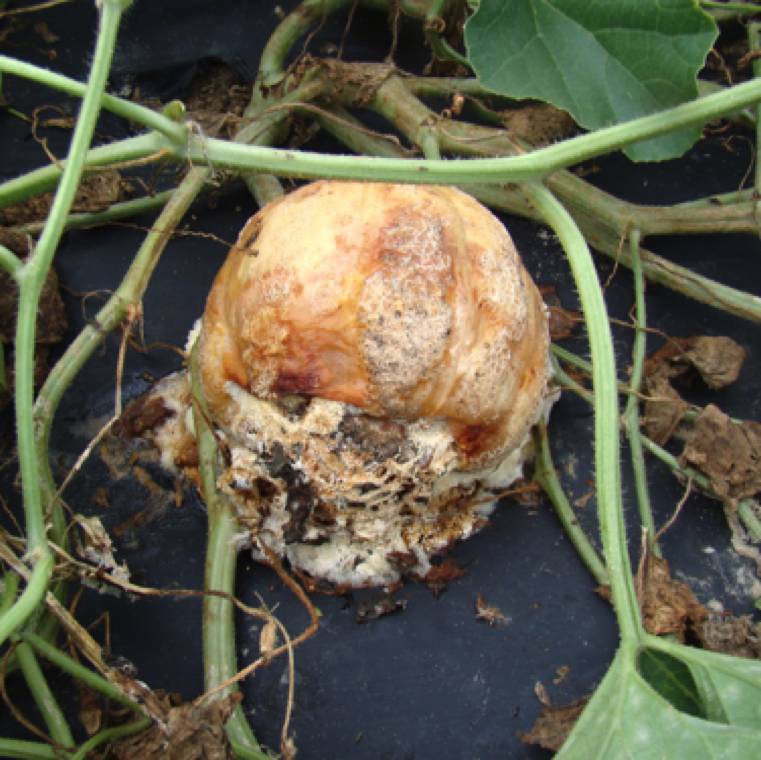Muskmelon
Sclerotium stem rot

Sclerotium rolfsii
Fungal Disease

Sclerotium rolfsii
Fungal Disease

Sclerotium rolfsii
Fungal Disease

Sclerotium rolfsii
Fungal Disease
Stem rot is a soil-borne disease that can cause significant damage to cucurbits, especially during warm weather. It primarily affects the main stem at the collar region of the plant, leading to wilting and other serious issues.
Symptoms:
- Wilting: The initial symptom of stem rot is wilting, which can resemble Fusarium wilt. However, stem rot is distinguishable upon closer inspection of the main stem.
- White Mycelial Growth: A characteristic symptom is the presence of white, cottony mycelial growth at the base of the plant, which restricts water flow to the plant, leading to wilting and eventual death.
- Sclerotia Formation: The pathogen produces small mustard-like reproductive structures called sclerotia. These brown, matured sclerotia can be seen on the stem and on the soil surface, aiding in disease identification.
- Soil-Borne Nature: Since the pathogen is soil-borne, the disease often appears in warm seasons when the environmental conditions favor its development.
Proper field management, including crop rotation and soil treatment, can help mitigate the spread of stem rot in cucurbit crops. Early detection is key to preventing widespread infection.




